Definition of risk ratio A risk ratio (RR), also called relative risk, compares the risk of a health event (disease, injury, risk factor, or death) among one group with the risk among another group It does so by dividing the risk (incidence proportion, attack rate) in group 1 by the risk (incidence proportion, attack rate) in group 2Relative Risk and Odds Ratio for the obese 3) Overall, you can see that decreasing the baseline incidence will decrease the odds ratio (300 in those who are nonobese versus 129 in those who are obese) Obviously, these results run counter to expected results, putting the onus on the researcher to justify them Similarly, you should findBoth the odds ratio and the relative risk compare the relative likelihood of an event occurring between two groups The relative risk is easier to interpret and is consistent with general intuition Some designs, however, allow only for the calculation of the odds

Relative Risk Vs Odds Ratio Youtube
Odds ratio vs relative risk youtube
Odds ratio vs relative risk youtube-The odds ratio for lettuce was calculated to be 112 How would you interpret the odds ratio?Risk ratios, odds ratios, and hazard ratios are three ubiquitous statistical measures in clinical research, yet are often misused or misunderstood in their interpretation of a study's results A 01 paper looking at the use of odds ratios in obstetrics and gynecology research reported 26% of studies (N = 151) misinterpreted odds ratios as risk ratios , while a




Interpreting Odds Ratios And Relative Risk Youtube
See all my videos at https//wwwzstatisticscom/videos/Health Stats IQ playlisthttps//youtubecom/playlist?list=PLTNMv857s9WUI5YsQMW14trmbopjZMWPa000 IntThe odds ratio ((a/c)/(b/d)) looks at the likelihood of an outcome in relation to a characteristic factor In epidemiological terms, the odds ratio is used as a point estimate of the relative risk in retrospective studies Odds ratio is the key statistic for most casecontrol studiesOdds and Risk are the most common terms which are used as measures of association between variables In this article, which is the fourth in the series of common pitfalls in statistical analysis, we explain the meaning of risk and odds and the difference between the two
Thus interpreting an odds ratio as though it were a relative risk could mislead us into believing that an effect size is bigger than is actually the case Crucially, however, large discrepancies are seen for only large effect sizes Suppose an odds ratio of, say, 02 reflects a true relative risk of 04About Press Copyright Contact us Creators Advertise Developers Terms Privacy Policy &Relative risks and odds ratios are widely reported in the medical literature, but can be very difficult to understand We sought to further clarify these important indices Methods We illustrated both relative risks and odds ratios using bar charts, then looked at the types of study for which each statistic is suited
The relative risk is the ratio of the risk in the exposed group to the risk in the unexposed group, as is summarized in Box 1 Depending on the study design and statistical method applied, the relative risk can be presented using different measures of effect, such as the incidence rate ratio and hazard ratioRisk = odds/(1odds) "Most published research providing an odds ratio as a measure of effect size should also provide sufficient information for the baseline risk, and hence the relative risk, to be calculated If numbers in each group are given, the crude relative risk can be calculated directly" – BMJ 14;348f7450 doi /bmjf7450The simple relative risk is 055 and the simple odds ratio is 025Clearly the probability of fathering a child is strongly dependent on a variety of demographic variables, especially age (the issue of marital status was dealt with by a separate analysis) The control group was 84 years older on average (435 years versus 351), showing the need to adjust for this variable




Relative Risk Vs Odds Ratio Extensive Video Youtube
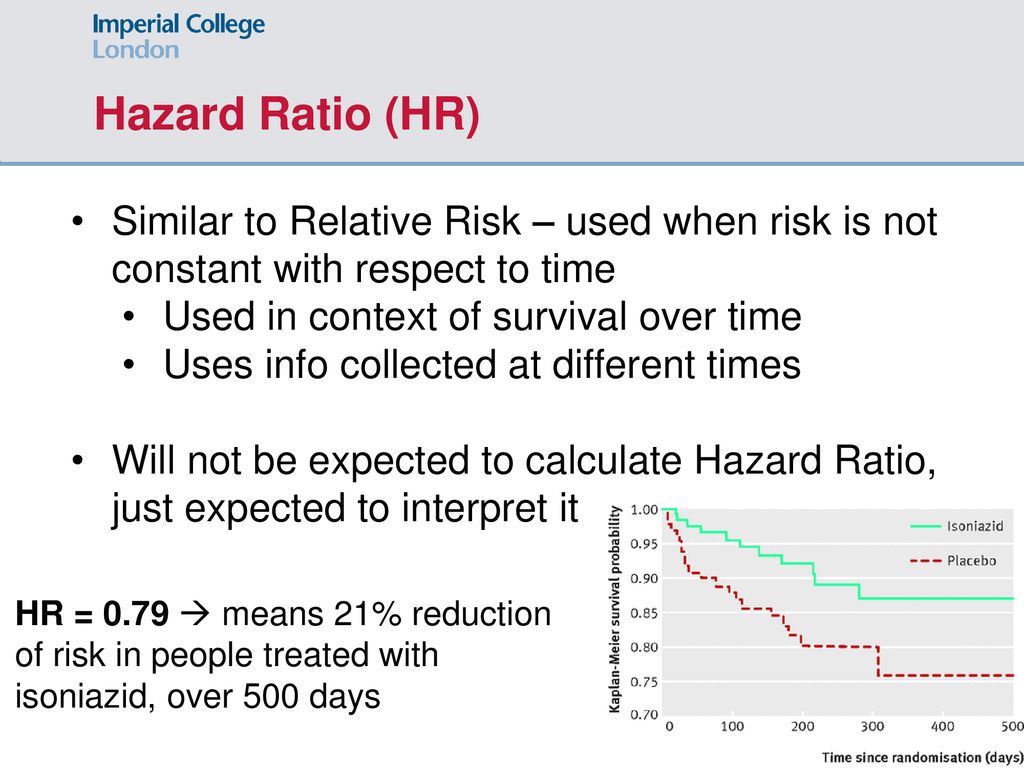



Data Analysis For The Bsc Year Ppt Download
Definition The Odds Ratio is a measure of association which compares the odds of disease of those exposed to the odds of disease those unexposed Formulae OR = (odds of disease in exposed) / (odds of disease in the nonexposed) Example I often think food poisoning is a good scenario to consider when interpretting ORs Imagine a group of friends went out toSafety How works Test new features Press Copyright Contact us CreatorsRealRisk works with any study which investigates the link between a risk factor or intervention and an outcome of interest, which also reports one of the following a relative risk (RR), hazard ratio (HR), odds ratio (OR) or a percentage change The study can be observational or experimental in design The terminology used can vary – so don't be put off if the terms 'risk factor' and




Estimation Of Absolute Risk Of Colorectal Cancer Based On Healthy Lifestyle Genetic Risk And Colonoscopy Status In A Population Based Study Gastroenterology
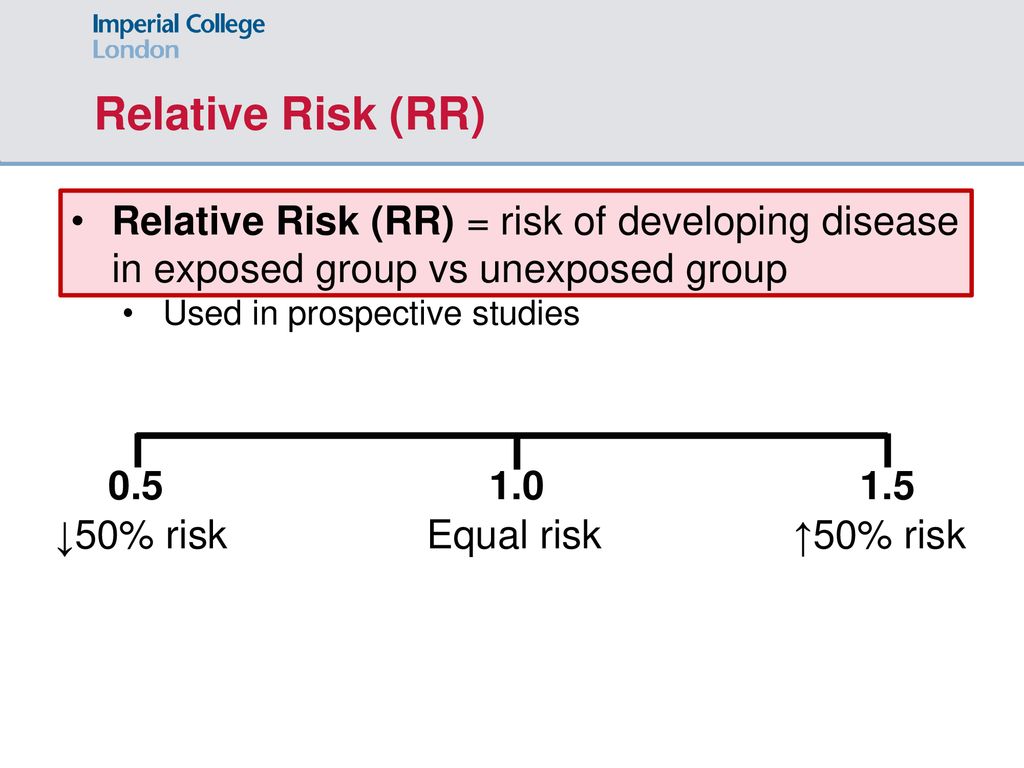



Data Analysis For The Bsc Year Ppt Download
Odds ratios (OR) are commonly reported in the medical literature as the measure of association between exposure and outcome However, it is relative risk that people more intuitively understand as a measure of association Relative risk can be directly determined in a cohort study by calculating a risk ratio (RR)Odds ratio vs risk ratio You know the difference between risk and odds A risk is the proportion of subjects with an event in a total group of susceptible subjects Thus, we can calculate the risk of having a heart attack among smokers (infarcted smokers divided by the total number of smokers) and among nonsmokers (the same, but with nonAn odds ratio of 112 means the odds of having eaten lettuce were 11 times higher among casepatients than controls Because the odds ratio is greater than 10, lettuce might be a risk factor for illness after the luncheon The magnitude of the odds ratio




Risk Risk Difference Relative Risk Youtube



What Is The Difference Between The Risk Ratio Rr And The Odds Ratio Or Quora
The risk or odds ratio is the risk or odds in the exposed group divided by the risk or odds in the control group A risk or odds ratio = 1 indicates no difference between the groups A risk or odds ratio >In clinical studies, as well as in some other settings, the parameter of greatest interest is often the relative risk rather than the odds ratio The relative risk is best estimated using a population sample, but if the rare disease assumption holds, the odds ratio is a good approximation to the relative risk — the odds is p / (1 − p), so when p moves towards zero, 1 − p moves towards 10 decreased risk Odds Ratio 0 5 10 15 More on the Odds Ratio Log Odds Ratio4 2 0 2 4




How To Interpret And Use A Relative Risk And An Odds Ratio Youtube




Odds Ratios And Risk Ratios Youtube
Risk Ratio vs Odds Ratio Whereas RR can be interpreted in a straightforward way, OR can not A RR of 3 means the risk of an outcome is increased threefold A RR of 05 means the risk is cut in half But an OR of 3 doesn't mean the risk is threefold;1 indicates a heightened probability of the outcome in the treatment group The two metrics track each other, but are not equalOdds Ratio and Relative Risk are examined in epidemiological context Odds ratio can mislead if a Common Event is studied, since it can exaggerate effects




Odds Ratio Relative Risk Risk Difference Statistics Tutorial 30 Marinstatslectures Youtube




How To Interpret And Use A Relative Risk And An Odds Ratio Youtube
If the relative risk is 1, the tutoring made no difference at all If it's above 1, then the tutored group actually had a higher risk of failing than the controls Odds Ratio The odds ratio is the ratio of the odds of an event in the Treatment group to the oddsOdds Ratio (OR) is a ratio or proportion of odds I just remember that odds ratio is a ratio of odds and probability isn't a ratio of odds (AKA it is the other option) Relative Risk = Probability / Probability Odds Ratio = Odds / Odds Now that you have a general idea of what odds ratio and relative risk are you need to know when to useRelative Risk Vs Odds Ratio on the Backpack and Back Pain Study Some researchers report relative risk (RR) and odds ratio (OR) when comparing two groups' outcome after they were exposed to a risk factor While these concepts can help us make better sense of risk assessment, some people can confuse both terms




Odds Ratio Relative Risk Epidemiology Statistics Tutorial Student Evaluate Treatments Youtube
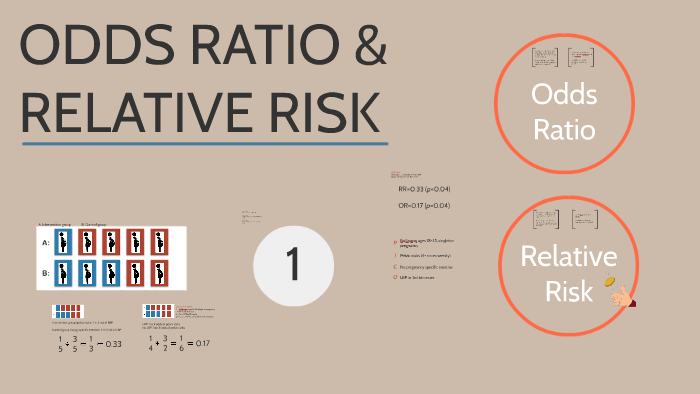



Odds Ratio Relative Risk By Susi Delaney
Risk ratios At a minimum, the only change that needs to be done to get risk ratios is to change the link function that relates the mean value of the response variable to the linear predictor For estimates of odds ratios, this is logit (ie the logarithm of the odds of the mean);Odds ratio vs relative risk Odds ratios and relative risks are interpreted in much the same way and if and are much less than and then the odds ratio will be almost the same as the relative risk In some sense the relative risk is a more intuitive measure of effect sizeThe quote surely just means to say that the odds ratio is a relative risk measure rather than an estimate of the relative risk, which as already point out is only approximately the case in cohort studies/randomized trials for very low proportions By relative risk measure I mean something that is given relative to some comparison group in a way that the absolute difference depends on the




Odds Ratio Relative Risk Risk Difference Statistics Tutorial 30 Marinstatslectures Youtube



How To Obtain Odds Ratio In Spss With Pictures Videos Answermeup
Measures of effect Relative risks, odds ratios, risk difference, and 'number needed to treat' G Tripepi1, KJ Jager2, FW Dekker2,3, C Wanner4 and C Zoccali1 1CNRIBIM, Clinical Epidemiology and Physiopathology of Renal Diseases and Hypertension of Reggio Calabria, Reggio Calabria, Italy;Relative risk 036, 95% confidence interval 017 to 079) When adjusted using logistic regression to control for other factors, the effects of the probiotic drink in reducing antibiotic associatedPercent increase = (Risk Ratio lower bound – 1) x 100 Percent decrease = (1 – Risk Ratio upper bound) x 100 It's worth stating again when comparing two proportions close to 1 or 0, the risk ratio is usually a better summary than the raw difference Odds Ratios We now turn to odds ratios as yet another way to summarize a 2 x 2 table




Converting An Odds Ratio To A Range Of Plausible Relative Risks For Better Communication Of Research Findings The Bmj




Relative Risk Odds Ratios Youtube
When the disease is rare, the odds ratio will be a very good approximation of the relative risk The more common the disease, the larger is the gap between odds ratio and relative risk In our example above, p wine and p no_wine were 0009 and 0012 respectively, so the odds ratio was a good approximation of the relative risk OR = 0752 and RRA smaller proportion of the probiotic group developed diarrhoea associated with antibiotic use compared with the placebo group (7 (12%) v 19 (34%);Relative risk, odds, odds ratio, and others The concept and method of calculation are explained for each of these in simple terms and with the help of examples The interpretation of each is presented in plain English rather than in technical language Clinically useful notes are provided,




What Is The Difference Between The Risk Ratio Rr And The Odds Ratio Or Quora



Relative Risk Vs Odds Ratio Authorstream
The homemade video abstract on the BMJ website shows you the difference between odds and risk, and how one odds ratio can mean several different relative risks (RRs), depending on the risk in one of the groups Unfortunately, in some situations, you just have to get an OR, notably logistic regression and retrospective casecontrol studiesSometimes, we see the log odds ratio instead of the odds ratio The log OR comparing women to men is log(144) = 036 The log OR comparing men to women is log(069) = 036 log OR >Pute either the odds ratio or the relative risk to answer this question The odds ratio compares the relative odds of death in each group For women, the odds were exactly 2 to 1 against dying (154/308 05) For men, the odds were almost 5 to 1 in favor of death (709/142 4993) The odds ratio is 9986 (4993/05) There is a 10fold greater




Relative Risk Odds Ratio And Risk Difference Aka Attributable Risk In R R Tutorial 4 8 Youtube




Odds Ratio Relative Risk Risk Difference With R R Tutorial 4 11 Marinstatslectures Youtube
2ERA–EDTA Registry, Department of Medical Informatics, Academic Medical Center, UniversityFor estimates of relative risk ratios, this becomes logarithmThe odds ratio (OR) is the ratio of the odds of cancer in smokers to the odds of cancer in nonsmokers OR = (a/b)/ (c/d) = (ad)/ (bc) The risk ratio (RR), also called the relative risk, is the ratio of the probability of cancer in smokers to the probability of cancer in nonsmokers Given that you know a, b, c, and d, you can compute either of




Relative Risk And Odds Ratio Youtube




Relative Risk Vs Odds Ratio Youtube
About Press Copyright Contact us Creators Advertise Developers Terms Privacy Policy &Rather the odds is threefold greater Interpretation of an OR must be in terms of odds, notSafety How works Test new features Press Copyright Contact us Creators




Odds Ratio Relative Risk Risk Difference With R R Tutorial 4 11 Marinstatslectures Youtube




Risk Risk Difference Relative Risk Youtube
Odds ratio and relative riskOdds Ratio, Hazard Ratio and Relative Risk Janez Stare1 Delphine MaucortBoulch2 Abstract Odds ratio (OR) is a statistic commonly encountered in professional or scientific medical literature Most readers perceive it as relative risk (RR), although most of them do not know why that would be true But since such perception is mostlyThis video will introduce you to odds ratio (OR) vs relative risk (RR) This video will explain the concepts and calculation of odds ratio (OR) vs relative risk (RR) and its interpretation in research results Reference Panczyk, M (, July 23) E²ect size odds ratio (OR) vs relative risk




How To Calculate Relative Risk 3 Steps With Pictures Wikihow




Odd Ratio Relative Risk And Attributable Risk Youtube
The odds ratio is the ratio of two odds ODDS RATIO Odds Ratio = Odds of Event A / Odds of Event B For example, we could calculate the odds ratio between picking a red ball and a green ball The probability of picking a red ball is 4/5 = 08 The odds of picking a red ball are (08) / 1(08) = 08 / 02 = 4 The odds ratio for picking a red0 increased risk log OR = 0 no difference in risk log OR <Relative Risk and Odds Ratio The relative risk (RR) is the probability that a member of an exposed group will develop a disease relative to the probability that a member of an unexposed group will develop that same disease RR = P(diseasejexposed) P(diseasejunexposed) If an event takes place with probability p, the odds in favor of the event




Interpreting Odds Ratios And Relative Risk Youtube




Using Odds Ratio In Case Control Studies Youtube Case Control Study Study Teaching
The odds ratio supports clinical decisions by providing information on the odds of a particular outcome relative to the odds of another outcome In the endocarditis example, the risk (or odds) of dying if treated with the new drug is relative to the risk (odds) of dying if treated with the standard treatment antibiotic protocol




What Is An Odds Ratio And How Do I Interpret It Critical Appraisal




Odds Ratio Relative Risk Risk Difference Statistics Tutorial 30 Marinstatslectures Youtube




Odds Ratio




When Can Odds Ratios Mislead The Bmj



How Big Is A Big Odds Ratio Interpreting The Magnitudes Of Odds Ratios In Epidemiological Studies Communications In Statistics Simulation And Computation Vol 39 No 4




Oddsplotty Has Landed On Cran R Bloggers




Spss Video 10 Obtaining Odds Ratio Relative Risk In Spss Youtube




Odds Ratio Relative Risk Risk Difference With R R Tutorial 4 11 Marinstatslectures Youtube




Nccmt Ure Relative Risk It S Easy To Calculate And Interpret Youtube




Relative Risk Odds Ratios Youtube




Relative Risk Odds Ratios Youtube




What Is An Odds Ratio And How Do I Interpret It Critical Appraisal




Effect Size Odds Ratio Or Vs Relative Risk Rr Youtube




Odds Ratio Relative Risk Calculation Definition Probability Odds Youtube




Odds Ratio Relative Risk Risk Difference Statistics Tutorial 30 Marinstatslectures Youtube




Relative Risk Odds Ratios Youtube




A Beginner S Guide To Interpreting Odds Ratios Confidence Intervals And P Values Students 4 Best Evidence




Against All Odds Improving The Understanding Of Risk Reporting British Journal Of General Practice




Oddsplotty Has Landed On Cran R Bloggers




263 Questions With Answers In Odds Ratio Science Topic



Http Www Floppybunny Org Robin Web Virtualclassroom Stats Basics Part13 Risks Rates Odds Pdf




Relative Risk Ratio And Odds Ratio Statistics Com Data Science Analytics Statistics Courses




Statquest Odds Ratios And Log Odds Ratios Clearly Explained Youtube




How To Interpret And Use A Relative Risk And An Odds Ratio Youtube




Nccmt Ure Relative Risk It S Easy To Calculate And Interpret Youtube




How To Calculate An Odds Ratio Youtube




Relative Risk Vs Odds Ratio Youtube




Odds Ratio Relative Risk Risk Difference With R R Tutorial 4 11 Marinstatslectures Youtube




Odds Ratio Relative Risk Risk Difference With R R Tutorial 4 11 Marinstatslectures Youtube




Definition And Calculation Of Odds Ratio Relative Risk Stomp On Step1 Nurse Practitioner Study Study Skills Research Methods
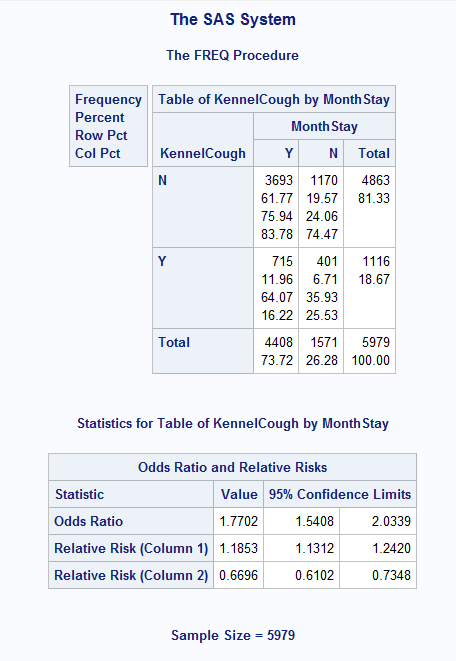



Different Odds Ratio From Proc Freq Proc Logisti Sas Support Communities




Calculating The Risk Ratio Odds Ratio And Risk Difference In A Randomised Controlled Trial Youtube



Jspn539nxwhlqm




Odds Ratio And Relative Risk Youtube




Biostatistics Odd Ratio Vs Relative Risk Youtube



1




Effect Size Odds Ratio Or Vs Relative Risk Rr Youtube




Relative Risks And Odds Ratios What S The Difference Mdedge Family Medicine



1



Studying Studies Part I Relative Risk Vs Absolute Risk Peter Attia




Odds Ratio Relative Risk Epidemiology Statistics Tutorial Student Evaluate Treatments Youtube




Reporting Odd Ratios And Chi2 With Asdoc Stataprofessor




How To Calculate Relative Risk 3 Steps With Pictures Wikihow



Q Tbn And9gcr Ttka12jaocnx Gn3ox9ci1ggq18vcw9359i6hq2cschyusam Usqp Cau
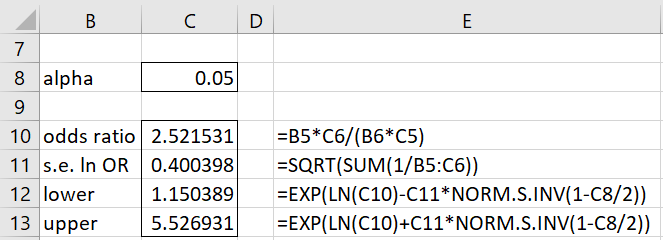



Effect Size For Chi Square Test Real Statistics Using Excel



Ctspedia Ctspedia Oddsrisk




Interpreting Odds Ratios And Relative Risk Youtube




Odds Ratio Relative Risk Risk Difference Statistics Tutorial 30 Marinstatslectures Youtube




Relative Risk Versus Odds Ratio Usmle Biostatistics 4 Youtube




Odds Ratio Relative Risk Risk Difference Statistics Tutorial 30 Marinstatslectures Youtube
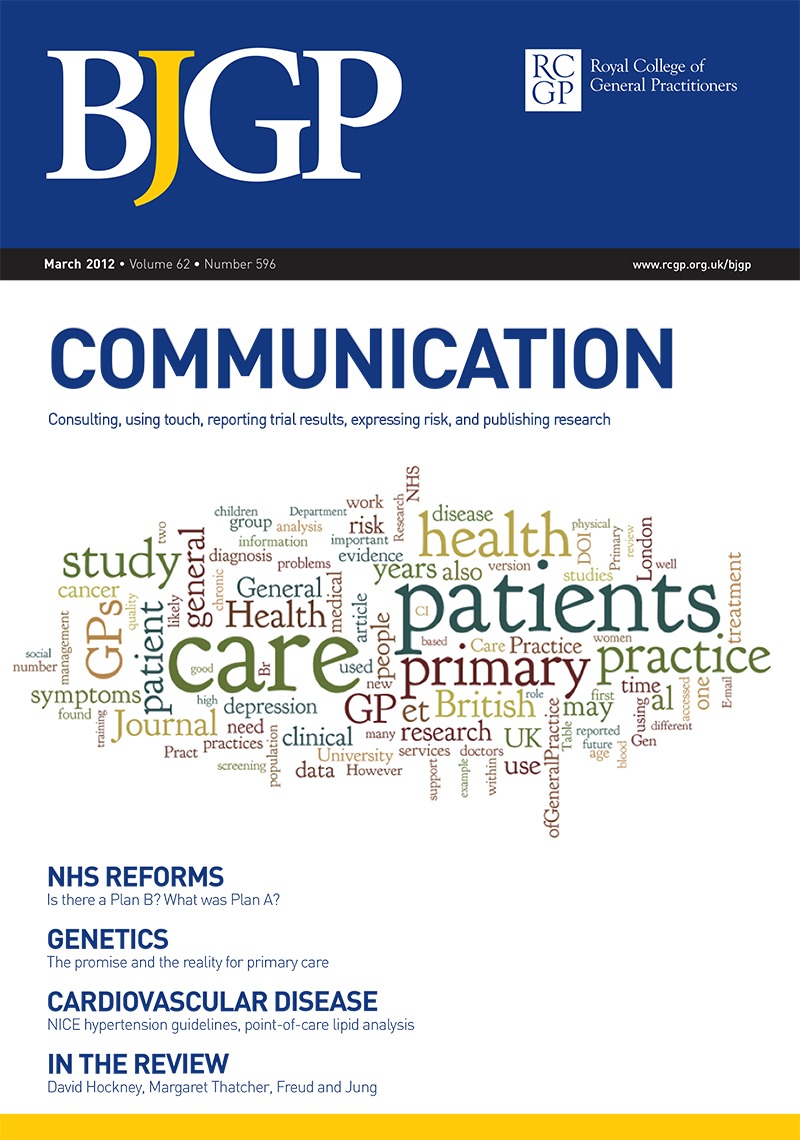



Against All Odds Improving The Understanding Of Risk Reporting British Journal Of General Practice




262 Questions With Answers In Odds Ratio Science Topic



Http Www Floppybunny Org Robin Web Virtualclassroom Stats Basics Part13 Risks Rates Odds Pdf




The Difference Between Relative Risk And Odds Ratios The Analysis Factor




Odds Ratio Relative Risk Risk Difference With R R Tutorial 4 11 Marinstatslectures Youtube




Risk Risk Difference Relative Risk Youtube




Definition And Calculation Of Odds Ratio Relative Risk Stomp On Step1




A Beginner S Guide To Interpreting Odds Ratios Confidence Intervals And P Values Students 4 Best Evidence




Interpreting Odds Ratios And Relative Risk Youtube
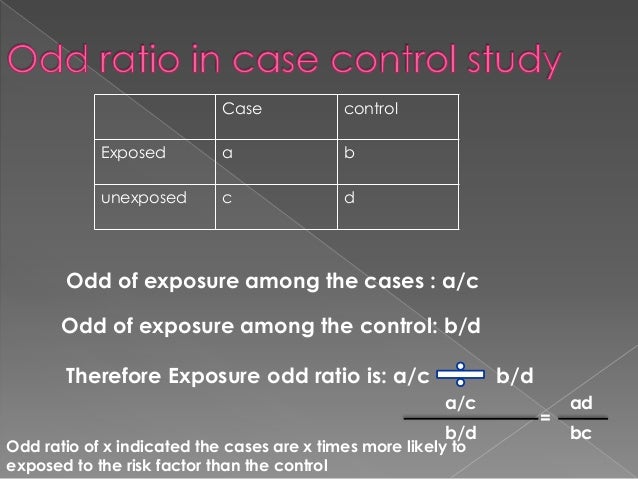



Odds Ratio




Calculating The Risk Ratio Odds Ratio And Risk Difference In A Randomised Controlled Trial Youtube




Odds Ratios And Risk Ratios Youtube




Definition And Calculation Of Odds Ratio Relative Risk Stomp On Step1




Tutorial About Hazard Ratios Students 4 Best Evidence




High Levels Of Coagulation Factor Xi As A Risk Factor For Venous Thrombosis Nejm




Odds Ratio Relative Risk Risk Difference Statistics Tutorial 30 Marinstatslectures Youtube




Odds Ratios And Risk Ratios Youtube




Odds Ratios And Risk Ratios Youtube




Risk Risk Difference Relative Risk Youtube



Q Tbn And9gcsdciarve4qxmues2ip Qg8ugk1mshcabjsxsnb3oitlp1asplq Usqp Cau




Calculating The Risk Ratio Odds Ratio And Risk Difference In A Randomised Controlled Trial Youtube




Odds Ratio Relative Risk Risk Difference Statistics Tutorial 30 Marinstatslectures Youtube




Odds Ratio Relative Risk Risk Difference With R R Tutorial 4 11 Marinstatslectures Youtube




Diagnostic Odds Ratio Wikipedia
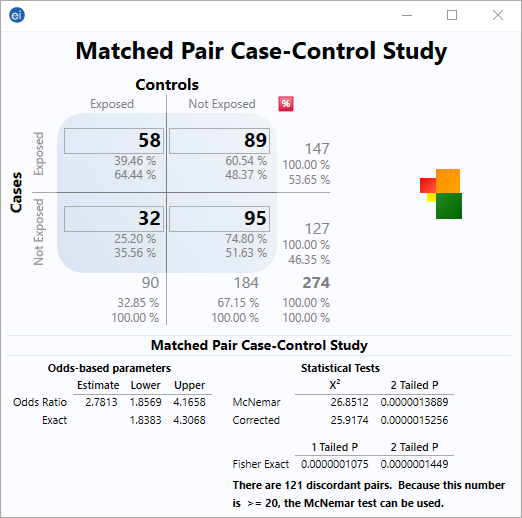



Matched Pair Case Control Statcalc User Guide Support Epi Info Cdc




Relative Risk And Odds Ratio Usmle The Journey



0 件のコメント:
コメントを投稿